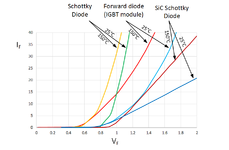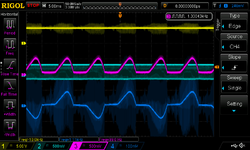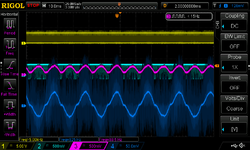mike buba
Member level 2
Hi. I am trying to reduce ringing. So far I have tried several things suggested here
I have recorded a few oscillograms around the IGBT chopper module to better understand the situation, but I cannot see the ringing in the voltage across IGBT. However, in this document (fig. 8, page 13.) y-axis is voltage and shows ringing.
In oscillograms I cannot see ringing in voltage, only in the current waveform coming into IGBT (?!).
Ch2: PWM pulse gate-emitter
Ch3: Voltage across IGBT
Ch4: current coming into IGBT
Schematic (detail)
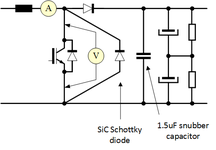
Oscillograms: Full pulse
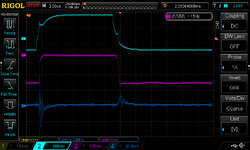
Turn-on detail
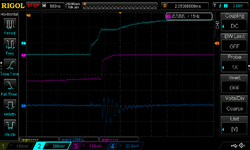
Measured ringing frequency approx. 8 MHz
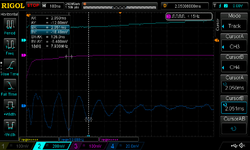
Is there anything else I can do? I do not feel changes 1) - 3) helped that much.
The last thing I can do is increase the gate drive resistance, but not sure if this will also make any significant difference; as there is currently no ringing in the voltage waveform.
1) Minimize DC-link inductance - I used aluminium plates to connect DC-link capacitors instead of cables
2) I added a SiC Schottky diode in parallel with the IGBT body diode
3) Increases RC Snubber circuit from 1uF to 1.5uF
4) I have not yet increased gate resistance.
I have recorded a few oscillograms around the IGBT chopper module to better understand the situation, but I cannot see the ringing in the voltage across IGBT. However, in this document (fig. 8, page 13.) y-axis is voltage and shows ringing.
In oscillograms I cannot see ringing in voltage, only in the current waveform coming into IGBT (?!).
Ch2: PWM pulse gate-emitter
Ch3: Voltage across IGBT
Ch4: current coming into IGBT
Schematic (detail)

Oscillograms: Full pulse

Turn-on detail

Measured ringing frequency approx. 8 MHz

Is there anything else I can do? I do not feel changes 1) - 3) helped that much.
The last thing I can do is increase the gate drive resistance, but not sure if this will also make any significant difference; as there is currently no ringing in the voltage waveform.
Last edited:
